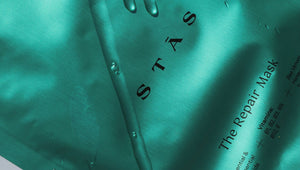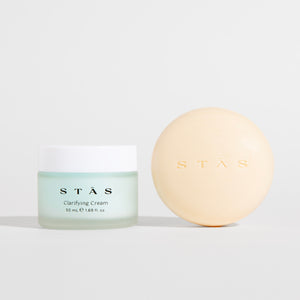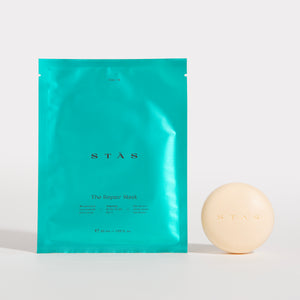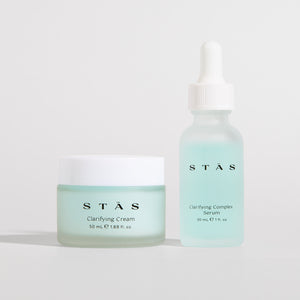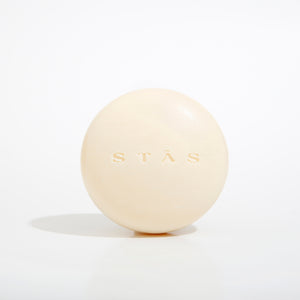The Right Way to Use a Sheet Mask (Most People Get This Wrong)
Oct 26, 2025
You spent $8 on a sheet mask. Fifteen minutes later, you peel it off and... nothing. Your skin feels slightly damp, maybe? But definitely not worth eight dollars.
Here's the thing: sheet masks work. But most people are either buying the wrong ones or using them at the wrong time in the wrong way. And that's a waste of money you don't need to be making.
After watching clients use (and misuse) masks for over 20 years, here's what actually matters when it comes to getting real results from your masking routine.
When to Mask Actually Matters
Not all masking moments are created equal. Your skin is more receptive to treatment at certain times, and that's when you'll get the most bang for your buck.
After Sun or Snow Exposure

This is one of the best times to mask. Whether you've been at the beach or on the slopes, UV exposure causes immediate oxidative stress and inflammation. Your skin is literally dealing with cellular damage in real-time.
Masking right after sun exposure delivers antioxidants (like the glutathione and green tea extract in our Repair Mask) when your skin needs them most. It's damage control, not just hydration.
Pro tip: Keep your masks in the fridge. That cooling effect isn't just luxurious—it actually helps calm inflammation and feels incredible on sun-heated skin.
Before Bed (Support Overnight Repair)
Your skin does most of its repair work while you sleep. Masking before bed gives your skin a concentrated boost of nutrients right when it's primed to use them.
This is when those 16 amino acids in our Repair Mask really shine—your skin can actually use those building blocks during its natural overnight repair cycle.
After Flights or Harsh Weather
Recycled airplane air, harsh winter wind, chlorinated pools—anything that compromises your skin barrier is a good time to mask. You're essentially giving your skin immediate reinforcement when it's been stripped down.
One note on flights: wait until you land and get somewhere clean (your hotel, home, etc.) before masking. Airplane bathrooms aren't the ideal environment for skincare, and you want to properly cleanse with clean water first. The dehydration from the flight will still be there 30 minutes later—your skin will thank you for waiting until you can do it right.
Post-Workout (With One Important Step)
After exercise, your circulation is elevated and your pores are open. This can enhance absorption—but only if you cleanse first. Don't mask on sweaty, dirty skin. Cleanse with something gentle (like our Repair Bar), then mask. The cooling effect also helps bring your skin temperature back down.
What Actually Makes a Mask Work (Beyond the Ingredient List)
Here's where most people get it wrong: they think a good mask is all about the ingredients listed on the package.
But ingredients don't matter if they can't get into your skin.
The Delivery System Is Everything
Most sheet masks work like this: serum sits on your skin, some of it absorbs through passive diffusion, most of it evaporates or gets wiped off.
Our Repair Mask uses a transdermal delivery system—it's designed to actually push those 16 amino acids, vitamins, and antioxidants deeper into your skin where they can work. That's the difference between feeling slightly dewy and actually seeing results.
When you're comparing masks, don't just look at the ingredient list. Ask: how is this getting into my skin? Because surface-level hydration isn't the same as actual treatment.
Concentration and Formulation Matter
A mask can list all the right ingredients and still be mostly water and fillers. The concentration of active ingredients and how they're formulated together determines whether you're getting treatment or just expensive hydration.
This is why we loaded our mask with not just one or two actives, but a complete profile: 16 amino acids, bee venom for penetration, L(+) lactic acid for gentle exfoliation, glutathione for antioxidant protection, plus vitamins B and E. It's formulated to work together, not just to look good on a label.
The Mistakes That Waste Your Results
Masking on Dirty Skin
Your mask can't penetrate through makeup, sunscreen, and the day's worth of oil and pollution. Always cleanse first. This isn't negotiable.
Removing It Too Soon (or Leaving It On Too Long)
Our masks work best at 20-30 minutes. Too short and the delivery system hasn't done its job. Too long and you're just sitting there with a drying piece of fabric on your face.
Set a timer. Do something else. Come back when it's actually ready.
Wasting the Extra Serum
That serum left in the package isn't decoration—use it. We always tell clients to apply it to their neck, décolleté, and hands. Those areas age faster than your face and rarely get the treatment they need.
If there's serum left on your face after removing the mask, don't wash it off. Pat it in. That's expensive nutrition your skin can use.
Not Following Up Properly
A mask isn't a complete routine. After you remove it and pat in the remaining serum, your skin is primed and receptive—this is the perfect time to apply your moisturizer or facial oil to seal everything in.
Think of masking as the treatment step, not the final step.
The Fridge Trick (It's Not Just Aesthetic)
Keeping your masks refrigerated isn't just for the spa experience (though that is nice). The cooling effect has real benefits:
- Reduces inflammation immediately
- Constricts blood vessels temporarily (helps with redness and puffiness)
- Feels incredible on sun-exposed or heated skin
- Makes the experience more soothing for reactive skin
Plus, let's be honest—there's something deeply satisfying about a cold mask on your face after a long day. Sometimes skincare should feel as good as it works.
How Often Should You Actually Mask?
This depends on what you're trying to solve and what mask you're using.
For our Repair Mask, we recommend up to 3 times per week. It's concentrated enough to be effective but gentle enough for frequent use. Some clients use it weekly for maintenance, others use it 2-3 times per week when dealing with specific concerns.
The key is consistency over intensity. One mask every few months won't do much. Regular masking as part of your routine? That's where you see cumulative results.
The Real Difference Between Masks That Work and Masks That Waste Money
After two decades of watching clients try every mask trend that comes through, here's what I've learned separates the effective from the expensive:
Effective masks have:
- Proven delivery systems (not just ingredients sitting in liquid)
- Concentrated actives in therapeutic amounts
- Multi-functional ingredients that work together
- Clear usage guidelines (when, how long, how often)
Expensive mistakes have:
- Pretty packaging with minimal active ingredients
- Marketing focused on experience over efficacy
- Vague "suitable for all skin types" claims with no real science
- Ingredient lists that read like trend-chasing
Your skin doesn't care about Instagram moments. It cares about whether you're actually delivering the nutrients it needs in a form it can use.
The Bottom Line
Sheet masks aren't a waste of money—bad sheet masks are a waste of money.
When you choose a mask with an actual delivery system, use it at optimal times (after sun exposure, before bed, after barrier-compromising activities), and follow proper technique (cleanse first, time it right, use the extra serum, follow up with moisturizer), you're not just doing self-care. You're doing effective care.
And yes, keep them in the fridge. Your sun-stressed, inflammation-prone skin will thank you.
Ready to mask the right way? Our Repair Mask was designed by an esthetician who's tired of clients wasting money on products that don't deliver. Because your skin deserves better than surface-level promises.
Want professional treatment alongside your at-home masking routine? Visit us at VHB Skincare in Rowland Heights or Costa Mesa. This October only: 30% off Radio Frequency Microneedling—one of our most effective treatments for sun damage and barrier repair. Book now →


